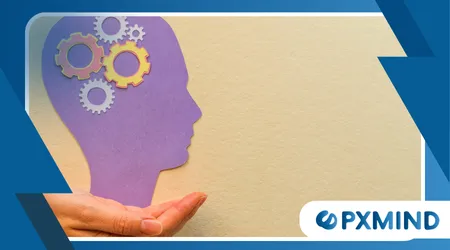How to Stay Motivated When Learning Something New

Understanding how to stay motivated when learning something new is more than just an academic concern—it’s a modern-day survival skill.
Anúncios
In a fast-evolving world, self-directed learning is the currency of relevance.
Yet, for many people, starting is easy; staying motivated is where it all falls apart.
Whether you’re acquiring a new language, transitioning into tech, or finally learning to play the piano, the journey gets bumpy. And the problem isn’t discipline—it’s often how we frame the process.
In this comprehensive guide, you’ll discover why motivation fades, what science says about our ability to learn, and—most importantly—how to regain momentum when it slips away.
Expect practical strategies, research-backed insights, and thought-provoking reframes.
The Real Psychology Behind Motivation Drops

When we begin a new learning journey, motivation feels limitless. There’s excitement, ambition, and the pleasure of novelty. But very few people prepare for what researchers call “The Motivation Dip.”
This psychological dip is closely related to the Dunning-Kruger effect—where early confidence isn’t based on skill but illusion.
Once real challenges arise, the initial enthusiasm collapses. That’s why understanding how to stay motivated when learning something new must go beyond surface-level advice.
According to a 2022 report by the Journal of Applied Psychology, people who tracked incremental progress rather than focusing solely on end results were 34% more likely to sustain learning habits after 90 days.
This shift from outcome obsession to process satisfaction is one of the most important mindset changes you can make.
Also Read: How Social Proof Influences Your Daily Decisions
Learning Isn’t Linear—And That’s Okay

Many people quit because they expect progress to be consistent. But cognitive development isn’t a straight line.
It’s cyclical—marked by periods of rapid progress, stagnation, and sometimes regression before breakthroughs.
The key is to understand that plateaus aren’t failure signals. They’re opportunities for reflection and consolidation. Instead of constantly reaching forward, look back.
Acknowledge how far you’ve come—even if it’s just improved consistency or better focus.
One of the most effective strategies for reinforcing progress is visual learning journaling.
A simple spreadsheet tracking what you studied, how it felt, and what you retained helps internalize your growth—even when you can’t see it day-to-day.
+ Mindhacks to Improve Your Memory for Good
Build Your Strategy, Not Your Discipline
The romantic notion of “discipline above all” is deeply flawed. Instead, focus on crafting environments and habits that make discipline less necessary.
People don’t rise to the level of their motivation—they fall to the structure of their systems.
This is where learning rituals come into play. Whether it’s starting with a five-minute warm-up, reviewing yesterday’s notes, or learning in a specific chair, these cues tell your brain it’s time to engage.
And for those who struggle with time, consider habit stacking.
This involves pairing your new learning habit with an existing routine—like listening to Spanish lessons during your morning coffee or reading two pages of a study guide before bed.
Also Read: How to Learn Faster with Proven Mindhacks
Momentum Grows From Motion, Not Perfection
One of the biggest myths about staying motivated is that it requires emotional readiness. But in reality, action often precedes motivation. Taking a small step triggers feedback. That feedback builds momentum.
A useful method here is the Two-Minute Rule. Start with just two minutes of the learning task. Often, those two minutes turn into twenty. The resistance lives in the start, not the study itself.
This principle works because the brain rewards action. Dopamine is released not just when we achieve goals, but also when we make progress toward them.
Even minimal motion tells the brain, “We’re doing something right.”
Emotions Are Data—Not Detours
Your emotional state can influence retention more than the time you spend studying.
Research published in Psychological Science (2023) showed that learners who associated a subject with positive emotion had a 42% higher recall rate after one week.
If you’re learning under stress or boredom, you’re likely absorbing far less than you think. Emotional design in your learning space matters.
Choose study playlists that energize you. Add inspirational quotes. Include visual cues of why you started this journey.
And don’t ignore how social context influences emotion. Join learning groups, mentorship communities, or online forums that reflect encouragement over competition.
Align Your Environment With Your Intention
Your space affects your focus. Neuroscientist Wendy Suzuki, in her 2023 TED Talk, emphasized that cognitive performance increases when the learning environment is free from distractions and designed to reflect intention.
That means turning off notifications, clearing clutter, and even using colors and lighting that boost concentration.
A simple change in your workspace setup can drastically impact your mental engagement.
More importantly, optimize your digital environment. Unfollow accounts that make you feel behind. Subscribe to newsletters that feed your curiosity.
One powerful curated source is Big Think, which offers science-backed insights from leading thinkers.
Your “Why” Needs to Be Visible
Every time your enthusiasm dips, revisit the reason you started. This “Why” shouldn’t just live in your head—it should be visible. On your desk. On your mirror. As your phone’s wallpaper.
Without an emotional anchor, the brain treats learning as optional.
But when you tie the skill to a personal or professional identity—”I’m learning UX writing because I want to transition into tech within a year”—your brain engages differently.
This deeper emotional framing activates parts of the brain responsible for long-term planning and emotional reward. And that’s exactly the kind of motivation you need when things get hard.
The Role of Feedback and Friction
You can’t improve what you don’t measure. And without feedback, your brain loses interest. Tracking progress—visually, socially, or even verbally—is essential for keeping the motivation flame lit.
One designer shared that he stayed on track by creating “before and after” screenshots of every design project he practiced.
These visuals showed tangible improvement, even when he felt stagnant. That reinforcement kept him going.
But feedback doesn’t always come from results. It can come from reduced friction. If a concept takes less time to understand than it did last week, that’s progress.
Protect Your Cognitive Bandwidth
Learning demands energy. If your brain is overstimulated, sleep-deprived, or emotionally overloaded, it will resist learning—no matter how passionate you are.
Start by protecting your attention. The average person checks their phone 96 times per day, according to a 2024 Statista report. That number reflects more than habit—it reveals fractured attention.
Use tools like the Pomodoro technique or apps like Forest to create time boundaries. These tools don’t just boost productivity; they support mental clarity, which is the foundation of retention.
Table: Motivation-Boosting Strategies That Actually Work
| Strategy | How It Helps You Stay Engaged | Real-World Application |
|---|---|---|
| Micro-Win Journaling | Makes small victories visible | Track one thing you learned per day |
| Habit Stacking | Builds consistency through existing routines | Add study to an established habit |
| Emotional Anchoring | Links learning to a meaningful purpose | Post your “Why” near your desk |
| Feedback Loops | Reinforces perceived progress | Use checklists or time trackers |
| Environment Curation | Reduces distractions and triggers focus | Organize physical/digital learning space |
Stay in the Room Long Enough to Improve
One of the most powerful truths about motivation is this: you don’t need to be the most talented person in the room—you just need to stay in it longer than most.
The consistency of effort outweighs intensity. And in most success stories, it’s not brilliance that wins. It’s repetition. Iteration. Showing up, again and again.
A French teacher in her fifties started learning JavaScript—not to become a developer, but to understand her students’ world.
She studied five days a week, for 20 minutes. A year later, she built a working quiz platform for her classroom. She didn’t race—she paced. And that made all the difference.
Final Thoughts
Learning something new isn’t always thrilling. In fact, most of the time, it’s slow, repetitive, and mentally exhausting.
But by applying human-centered strategies, aligning your environment, and celebrating micro-wins, you build systems that support the days you don’t “feel like it.”
So next time you wonder how to stay motivated when learning something new, don’t search for a secret.
Remember: progress doesn’t come from inspiration—it comes from structure, patience, and staying in motion even when the results are invisible.
Frequently Asked Questions
1. How can I avoid burnout when learning a new skill?
Set realistic expectations. Alternate between intense focus and rest. Use the Pomodoro method and avoid overloading your schedule with multiple learning goals at once.
2. What if I don’t have enough time to learn every day?
Focus on consistency, not volume. Even 10 minutes a day adds up. It’s better to study briefly but regularly than sporadically with long gaps in between.
3. Should I always follow the same study routine?
No. While routines provide structure, variation enhances cognitive engagement. Mix up materials, learning times, and formats (video, audio, reading) to keep it fresh.
4. What role do physical health and sleep play in learning motivation?
A huge one. Sleep consolidates memory and restores cognitive energy. Nutrition, hydration, and movement also improve focus and mental clarity.
5. How do I know if I’m actually making progress?
Track it. Write down what you’ve learned, teach it to someone, or try applying it in real scenarios. If it feels easier to understand or explain, you’re growing.
